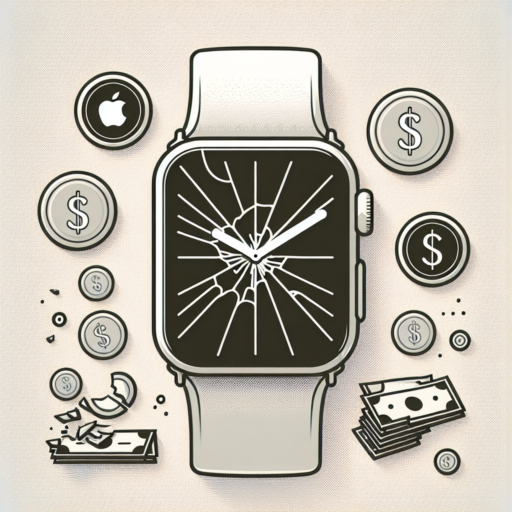How to race route on Apple Watch?
Navigating or racing a route on your Apple Watch can turn everyday runs into exciting challenges. Whether you’re a seasoned runner looking to beat your personal best or a casual jogger aiming to add some variety to your exercise routine, your Apple Watch has built-in features that facilitate these activities. This guide walks you through the essentials of setting up and racing a route directly from your wrist.
Setting Up Your Route
Before you lace up your running shoes, you need to set your desired route. Use the Apple’s Workout app to either select a previous route you’ve run or create a new one using third-party apps that are compatible with Apple Health. Once your route is chosen, make sure your watch is fully charged to avoid any interruptions during your race.
Racing Against Your Best Time
After setting up your route, the next step is to start your race. Swipe to the ‘Outdoor Run’ option in the Workout app and tap to start. If you’re aiming to beat a previous time, ensure that your selected route is loaded. Your Apple Watch will track your progress in real-time, comparing your current pace against the best time you’ve recorded for that specific route. Helpful auditory and haptic feedback will guide you throughout, letting you know if you’re ahead, behind, or on track to meet your goal.
Does the Apple Watch track the running route?
Many runners, both amateur and experienced, frequently ask, «Does the Apple Watch track the running route?» This is not surprising given the growing interest in digital tools that enhance fitness experiences. The answer is yes. The Apple Watch is equipped with a comprehensive suite of features designed to track various fitness activities, including your running routes. This functionality is particularly beneficial for those looking to monitor their progress, set personal goals, and understand more about their running habits.
The tracking is made possible through the Apple Watch’s built-in GPS technology, which accurately captures your location data during outdoor runs. Once you start your running session through the Workout app on the watch, it begins to map your route, showing you detailed visuals of your journey upon completion. This includes the path you’ve taken, the distance covered, and even the elevation changes if your run included hills or slopes. Such detailed tracking helps runners analyze their routes for performance improvement and for sharing their accomplishments with friends or social media followers.
Moreover, the Apple Watch takes tracking a step further by integrating with other health and fitness apps. This integration allows for a more detailed analysis of your running routes, including pace, split times, and heart rate monitoring. Through the Health app on your iPhone, which syncs with your Apple Watch, you can view your running routes alongside other health and fitness data gathered by the watch. This holistic approach empowers runners to make informed decisions about their training and health.
Can you plan a route on Apple Watch?
Indeed, planning a route directly on your Apple Watch is a feature that many users seek to leverage for outdoor activities such as walking, running, or cycling. The Apple Watch’s integrated GPS functionality, along with various apps, facilitates route planning and real-time navigation. This capability turns your wrist device into a convenient and efficient travel companion, ensuring you remain on track without constantly having to refer to your smartphone.
Using Apple Maps for Route Planning
Apple Maps is the default mapping solution on Apple Watch, offering a seamless navigation experience. To plan a route, simply use Siri or the Maps app to input your destination. The Apple Watch then provides turn-by-turn directions, vibrating to indicate upcoming turns. This hands-free utility means your focus can stay on your surroundings rather than your screen, enhancing safety and convenience during your travels.
Third-Party Apps for Enhanced Navigation
Besides Apple Maps, a plethora of third-party apps on the App Store offer enhanced route planning capabilities tailored to specific activities. Apps like Google Maps, Strava, and Komoot integrate with the Apple Watch, enabling users to plan their routes with a focus on biking, hiking, or public transportation. The flexibility to choose between different apps allows users to select the one that best suits their navigation style and preferences.
No se han encontrado productos.
How do I see running routes on Apple?
Finding and reviewing your running routes on Apple devices is a straightforward process, leveraged by the integration of cutting-edge technology and user-friendly interfaces. Whether you are using an iPhone or an Apple Watch, Apple provides several ways to plan, track, and review your running paths with ease.
Using the Apple Health App
One primary method to view your running routes is through the Apple Health app. The app automatically records your running distances, paths, and other workout details when paired with an Apple Watch. To see your route, simply navigate to the ‘Workouts’ tab within the Health app, select the workout you’re interested in, and scroll down to the map section. This feature-rich app also allows you to delve into specifics like pace, elevation, and heart rate during various segments of your run.
Exploring with the Apple Maps App
Another handy tool for runners is the Apple Maps app. Not only can you use it to find new routes, but it also stores the paths you’ve traversed during your runs, provided location services are enabled for your workouts. After completing a run with your Apple Watch or iPhone, you can view your route by opening the Apple Maps app, going into the ‘History’ section, and selecting the specific workout. This visual representation offers a detailed overview of your journey, marking your start and end points vividly.
It’s clear that Apple provides multiple avenues for runners to track and view their routes, each designed to cater to different preferences and needs. By utilizing the technology embedded in the Health and Maps apps, runners can enhance their training experiences, ensuring they have all the data they need at their fingertips.




